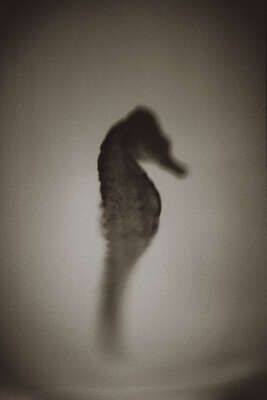

- Exclusive offers
- Inspiring new releases
- Personal invitations to Art Events

AQUATICS Henry Horenstein (*1947) has been a popular figure and teacher in American photography for a long time, spreading his influence to a myriad of admirers and practitioners of the… Read more
Intro Bio Exhibitions
























| 1965-69 | University of Chicago, History Major |
| 1967 | University of Warwick (England) |
| Study with Historian E.P. Thompson | |
| 1968 | Summer Workshop, Arlington, MA |
| Study with Minor White | |
| 1970-73 | Rhode Island School of Design |
| MFA, Photography (1973) | |
| BFA, Photography (1971) | |
| Study with Harry Callahan and Aaron Siskind | |
| 1974-76 | Instructor, Photography, Harvard University, Cambridge, MA |
| Since 1975 | Free-lance photographer and author |
| 1976-78 | Instructor, Photography, University of Massachusetts, Boston, MA |
| 1979-85 | Creative consultant, Polaroid Corporation, Cambridge, MA |
| 1981-94 | Part-time faculty, Photography and Illustration: Rhode Island School of Design |
| 1989 | Visiting Faculty, Cooper Union, New York, NY |
| Since 1994 | Professor, Photography: Rhode Island School of Design |
| 2007 | “Looking at Animals”, Harvard University Museum of Natural History, Cambridge | |
| “Honky Tonk”, Museum of the Rhode Island School of Design, Providence, RI | ||
| “Humans and Other Creatures”, Farmani Gallery, Los Angeles | ||
| 2006 | “Honky Tonk”, Smithsonian National Museum of American History, Washington , DC | |
| “Honky Tonk”, HUG Gallery, Amsterdam 2006 | ||
| “Humans and Other Creatures”, John Cleary Gallery, Houston, TX | ||
| “Humans”, Clifford-Smith Gallery, Boston, MA | ||
| 2005 | “Aquatics”, Kidder Smith Gallery, Martha’s Vineyard, MA | |
| “Humans and Other Creatures”, Candace Perich Gallery, Katona, NY | ||
| 2004 | “Honky Tonk”, The Light Factory, Charlotte, NC | |
| “Honky Tonk”, The Print Center, Philadelphia, PA | ||
| “Honky Tonk”, Photographic Resource Center, Boston, MA | ||
| “Honky Tonk”, Paul Kopekin Gallery, Los Angeles, CA | ||
| “Honky Tonk”, John Cleary Gallery, Houston, TX | ||
| 2003 | “Honky Tonk”, Sarah Morthland Gallery, New York, NY | |
| “Honky Tonk”, Country Music Hall of Fame and Museum, Nashville, TN | ||
| “Aquatics, Creatures, & Canine”, Afterimage Gallery, Dallas, TX | ||
| 2002 | “Aquatics”, Robert Klein Gallery, Boston, MA | |
| “Aquatics, Creatures, & Canines”, Margolis Gallery und Houston Center for Photography | ||
| 2001 | “Canine”, Clifford-Smith Gallery, Boston, MA | |
| Silver Eye Center for Photography, Pittsburgh, PA | ||
| 2000 | Edward Carter Gallery, Lewes, DE | |
| Sarah Morthland Gallery, New York, NY | ||
| 1999 | John Cleary Gallery, Houston, TX | |
| New England School of Photography | ||
| 1998 | Kathleen Ewing Gallery, Washington, DC |
| 2007 | “Betes et Hommes”, Parc de la Villette, Paris, France | |
| International Museum of Photography, George Eastman House, Rochester, NY | ||
| “Close Relations”, Robert Klein Gallery, Boston, MA | ||
| 2006 | “Going Ape”, DeCordova Museum, Lincoln, MA | |
| 2003 | “The Art of the Game”, Robert Klein Gallery, Boston, MA | |
| “Visions and Revisions: Art on Paper since 1960”, Museum of Fine Arts, Boston, MA | ||
| “Aquatics”, Kathleen Ewing Gallery, Washington, DC | ||
| 2002 | “Aquatics”, Paul Kopekin Gallery, Los Angeles, CA | |
| 2001 | “Aquatics”, Edward Carter Gallery, New York, NY | |
| “Florida Fragments”, Southeast Museum of Photography, Daytona Beach, FL | ||
| Candace Perich Gallery, Katonia, NY | ||
| “Honky Tonk”, Photographic Resource Center, Boston, MA | ||
| 2000 | Robert Klein Gallery, Boston, MA | |
| “Photography in Boston: 1955-1985”, DeCordova Museum, Lincoln, MA | ||
| LewAllen Contemporary, Santa Fe, NM | ||
| "The Future Dog!”, AKC Museum of the Dog, St. Louis, MO | ||
| 1999 | Robert Klein Gallery, Boston, MA | |
| “Animals Are Funny People”, Keith DeLellis Gallery, New York, NY | ||
| “Aquatics”, Galveston Art Center, Galveston, TX | ||
| “Boxing”, Paul Kopeikin Gallery, Los Angeles, CA | ||
| Boston Public Library, Boston, MA | ||
| 1997 | “Students of Harry Callahan”, High Museum of Art, Atlanta, GA | |
| “10 Artists”, Photographic Resource Center, Boston, MA | ||
| “Photographs We Like”, Bonni Benrubi Gallery, New York, NY | ||
| “Hope: Photographs”, The National Arts Club, New York, NY | ||
| 1996 | Elvis Death Week”, Delta Axis, Memphis, TN |
Secure your favourite artwork now!
Visit LUMAS USA!
Delivery to your country is not possible from this site.
If you would like to place an order, please visit LUMAS USA.